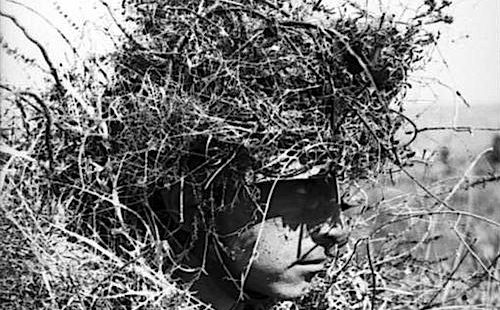Camouflage
The term camouflage first came to English in the late 1800s, and back then it referred to “general concealment.” During the first World War, a new military-specific sense arose: “the act, means, or result of obscuring items or personnel to deceive an enemy.” Interestingly, the zoological sense of camouflage—the coloring or markings on animals that conceal them from predators or prey—also entered English during World War I. But, it wasn’t until the 80s when fashion designers decided to introduce camo-clothing into everyday wardrobe.




















